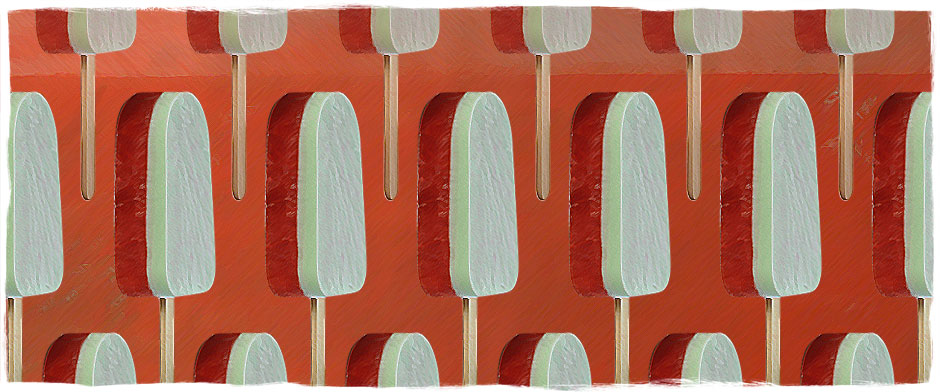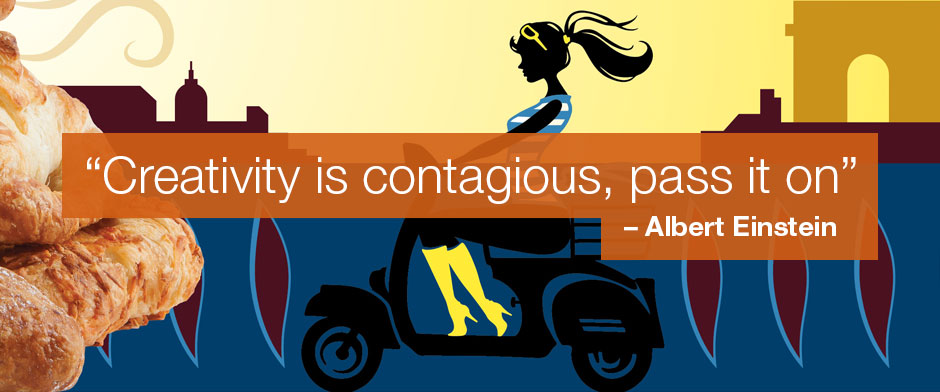Monthly Archives :
April 2014
Natural Inspiration
Elephant Rock, Valley of Fire State Park, Nevada, USA, by Michael Muraz. 2013. Another Angle, Michael Muraz Photography, The Natural World.
I still remember those lazy days of summer when I was a kid. With nothing better to do, I’d lay on my back in the cool grass in front of my house just staring up into the sky. As I watched the clouds roll by I imagined I saw bears, faces of famous people, or the flowing profiles of birds in flight. There were never two of the same images, and that made it a fresh, new experience every time. I’d lay there in the grass, eagerly anticipating what I might see.
Pareidolia is the psychological term for this little blip in our brains that causes us to see faces, figures, forms or patterns in things. Ancient astronomers got it. They saw animal and human shapes in the many constellations brightening the night sky.
Leonardo Da Vinci even suggested in his notebooks that pareidolia was an excellent source of inspiration for painters. He expanded this concept to include imagery seen in city structures. Here’s what he suggested, “If you look at walls that have various stains or spots you will be able to ‘see’ or invent a scene that resembles different landscapes such as mountains or rocks, valleys or trees. Expressions on faces will emerge, and outlandish clothes and costumes will be able to reduce into separate and conceived forms.”
I’ve enjoyed viewing a painting in which the morphing cloud formations over Cloud’s Rest in Yosemite come to life in the form of stampeding steers in the dreamy skies above a solitary cowboy. An untold number of photographers have captured the slowly evolving shadow shapes and distinctive rock formations of the mountains at sunset in the Valley of Fire – which become imagined forms of seven sisters and a huge elephant.
As an illustrator and designer, this ability to “see” things in nature that go well beyond the obvious, is a continual source of creative inspiration. The flowing lines and radiating ripples in a local mountain stream became my inspiration for a corporate brochure.
Although I don’t spend much time on my back gazing skyward anymore, I still see images, patterns and anthropomorphic shapes in nature. The point is, inspiration is everywhere and all we need to do is open our eyes. No telling what we’ll see.
A Deliciously Artistic Treat
At FineLine we have a time honored tradition of celebrating birthdays. How we celebrate is not all that dissimilar to how birthdays are generally celebrated. We take the birthday person to lunch at a place of their choosing, filling up on good conversation and food. Later in the day, a special treat (cake, cookies, ice cream, pie, cream puffs, tarts, etc.) is burdened with candles and placed in front of the birthday person as we ceremoniously sing “Happy Birthday to You.”
At our last birthday celebration we were pleasantly surprised to see that the special treat was popsicles. These were not your regular, store bought, popsicles. Our Production Artist, Rochi Ladcani, in tandem with our Project Manager, Freddie Allen, had conspired to create these exquisite frozen delights together.
As we eagerly waited to receive a popsicle, two questions permeated the atmosphere. “What is the flavor of the popsicle?” and “How did they come up with the marvelous idea?” Our intellectual appetites were satisfied with the knowledge that the flavor of the popsicle was vanilla on one side and strawberry on the other. The vanilla side was light green and made from vanilla, heavy cream, and cornstarch. The strawberry side was laboriously created using fresh strawberries, sugar, and water.
The resulting combination of textures and flavors provided by the two different sides brought to mind strawberry creamsicles, but these frozen creations were infinitely better. When we pressed our two dessert chefs to reveal their sources, they produced a book titled, Modern Art Desserts: Recipes for Cakes, Cookies, Confections, and Frozen Treats Based on Iconic Works of Art, by Caitlin Freeman.
Caitlin Freeman is a pastry chef at the Blue Bottle café at the San Francisco Museum of Modern Art. For inspiration, she roams the museum’s many exhibits, then selects a work of art to translate into an edible masterpiece. Caitlin’s book details her foray into the world of desserts and pastries and how she came to be the Head Pastry Chef at the Blue Bottle Coffee Company at the SFMOMA. The lure of the book is the assortment of recipes; from Mondrian cake to Kudless S’Mores to Avedon Parfeit to the Cragg Ice Cream Cone.
The birthday popsicle that we at FineLine had been fortunate to consume was none other than the “Zurier Popsicle,” inspired by John Zurier’s painting, Arabella as seen below.
Left: Painting, Arabella, by John Zurier. 2005. The San Francisco Modern Museum of Art, California. 16 April 2014. Desserts at the SFMOMA, Blue Bottle Coffee Company
Right: Zurier Popsicle, by the Blue Bottle Coffee Company. 2013. The San Francisco Modern Museum of Art, California. 16 April 2014. Desserts at the SFMOMA, Blue Bottle Coffee Company
After we devoured out “Zurier Popsicles” it was unanimously decided that art inspired cakes, cookies, confections, and frozen treats are a brilliant idea.
If anyone wants to have their eyes and tastebuds dazzled, I encourage you to pick up Modern Art Desserts: Recipes for Cakes, Cookies, Confections, and Frozen Treats Based on Iconic Works of Art. It is a win-win situation showcasing iconic pieces of art and beautiful desserts that satisfy your sweet tooth.
Siloing
I came across an article the other day in Connect Magazine and was introduced to Siloing or Silos. I am familiar with silos in their most general sense, a structure used for storing bulk materials (grain, coal, cement, woodchips etc.). However, in this article the word Silos referred to something quite different.
Within the world of business, Silos is “a corporate word for non-communication and incompatible goal-setting between departments.” states Manny Hernandez in Connect Magazine. This non-communication results in one department within an organization operating without regard for what others are doing. In very simple terms, they are only looking out for themselves. The end result can have devastating effects on the company ranging from reduced productivity to having good people leave the ranks.
The article “Siloing” recommended six ways to quash the silo mentality that I thought would be pertinent to any business or organization. They are summed up below:
- Communicate
Create a dialog between departments/teams so they know what you are working on and why. - Align
It is important to know how departments/teams support your department/team and vice versa. - Use cross-functional teams to brainstorm together
Having another set of eyes and ears on your project helps you see the bigger picture—giving rise to new perspectives and problem-solving solutions. - Reward collaboration
Reward the collaboration between departments/teams. Rewarding an individual on their work, or their team’s work, offers no incentive to care about the other department or team’s success. - Focus on the customer
Organizing around the customer motivates departments/teams to share marketplace information, customer feedback, and customer experiences to help meet or exceed customer expectations. - Get personal
Get to know people as individuals. Relationships thrive in an environment of personal trust.
What struck me about this article was that these six ideas seem to be, or at least should be, intuitive. When you work for a company, the main focus should be what’s best for the company. If the company thrives so will everyone that works within it.
The same goes for clients. My end goal at FineLine Graphics & Design is to always provide the best solution, product, or design for the client. I don’t strike out on my own to solve a design issue. I collaborate with my manager, production artist, designers and the client to come up with the best possible solution for the design. When the client is happy with the design we all benefit from it as a whole.
Ultimately the sum of the parts makes the whole. We can accomplish more by collaborating and working together than by working on our own.
New Website
At the start of the new year we decided that our website was in need of an update. With the proliferation of smartphones and tablets it became apparent that our site was not living up to its full capacity. When our site was viewed via desktop or laptop computer it worked perfectly, but the same could not be said when viewed on a smartphone or tablet. Text was woefully small and difficult to read and our projects were not displaying to their full potential.
We drew up a series of criteria that our new site must include.
- The site must be mobile friendly.
- Content would be shortened and readable.
- Our projects would be brought to the front of the site where they would be easily accessible.
- The site would be social media conscious.
These four criteria guided the design and creation of our new website. The end result can be viewed at www.finelinegd.com. Here’s a quick preview of some improvements we made.
Projects Page
When visiting our site, you will be greeted by our “Projects” page displaying a scrolling slide bar with inspirational quotations. Just below the slide bar you’re able to select projects by category. If you’d like to see samples of trade shows and events you simply select it from the list and multiple thumbnails of our trade shows and events will present themselves.
Project Post Pages
Once you select a specific project, you will be taken to the “Project Post” page where you will see your chosen project in its entirety. If you scroll to the bottom you can like it on Facebook, Tweet about it, or share it on LinkedIn. Additionally, you’re not required to navigate back to the Projects page. Each Project Post page offers similar projects that can be viewed. It’s easy to move forward or backwards through the category by using the supplied arrows.
Blog Page
Our blog will contain more detailed information about specific projects, musings about design, print and web related media, and much more.
Contact Page
The contact page features a map with our current location and a contact form for people to send us a quick message with ease.
We hope you enjoy the new look and design of the website!







Recent Comments